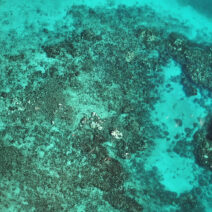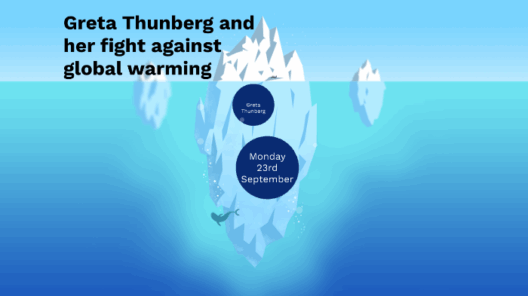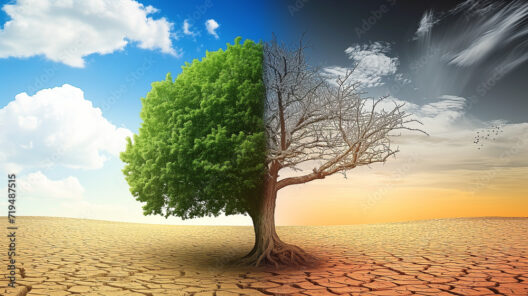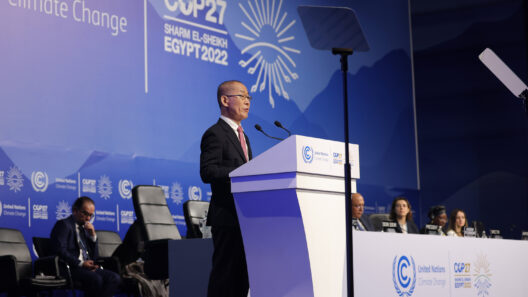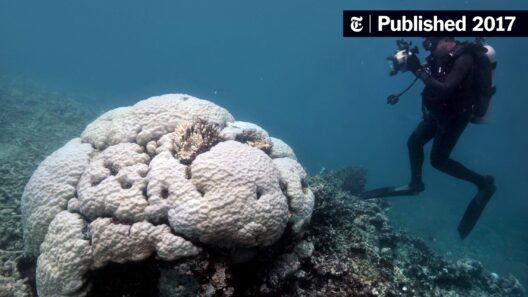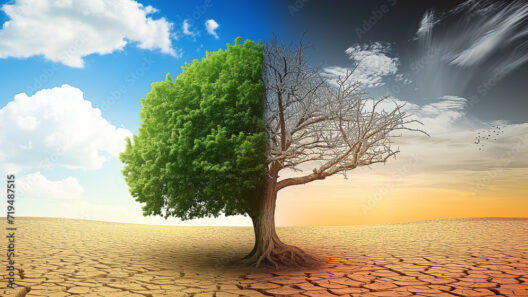The ocean, often dubbed the “blue heart” of our planet, operates like a colossal thermostat, regulating not only its own temperature but also the climate of the entire Earth. However, this natural system is increasingly challenged by the relentless surge of global warming, raising significant concerns about marine life and ocean circulation. Understanding how these elements interconnect is crucial to grasping the broader implications on the biosphere.
To comprehend the ocean’s role as a thermostat, one must first appreciate its vastness. Covering more than 70% of the Earth’s surface, the ocean is not merely a body of water; it hosts a dynamic interplay of systems that absorb and redistribute heat. The intricate dance of currents, driven by wind, salinity, and temperature gradients, sustains a delicate equilibrium. This circulation affects regional climates, influencing weather patterns and life forms both within the ocean and on land. Think of the ocean as a gigantic engine, where temperature regulation is the fuel. But when excess carbon dioxide melts the ice caps and warms the waters, this engine begins to sputter.
As the ocean absorbs more heat, it leads to phenomena such as thermal stratification. Warmer surface waters become less dense than deeper, cooler waters, creating layers that impede nutrient blending. These nutrients are vital for sustaining marine ecosystems, as they support phytoplankton—the very foundation of the marine food web. Picture a lush garden deprived of sunlight, where photosynthesis falters and growth stunted. Such stratification can precipitate a crisis for marine life, triggering algal blooms that produce toxins harmful to fish and marine mammals.
The repercussions extend far beyond the microscopic world of phytoplankton. When marine animals adapt to temperature changes, their migration patterns, breeding cycles, and feeding habits are altered. Species like the cod, once abundant in certain areas, are now relocating to cooler waters, which can disrupt established ecosystems. This migration is reminiscent of a grand theater where the cast changes mid-performance, leaving behind puzzled spectators. Coastal communities that rely on these fish for their livelihoods face uncertainty as their traditional fishing grounds diminish.
In addition to adapting to changing temperatures, marine life must grapple with ocean acidification. The oceans are efficient at absorbing carbon dioxide, which not only alters water chemistry but also jeopardizes calcifying organisms, such as corals and shellfish. As the pH of the ocean declines, these organisms struggle to form calcium carbonate, essential for their structural integrity. Imagine constructing a building with a crumbling foundation; this is the precarious plight of coral reefs, often referred to as the rainforests of the sea. These vibrant ecosystems provide shelter and sustenance for a myriad of species, and their decline heralds a domino effect that could obliterate marine biodiversity.
Furthermore, the warming waters exacerbate the frequency and intensity of extreme weather events such as hurricanes and typhoons. When these tempests ravage coastlines, the aftermath is devastating. Coral bleaching can occur, where stressed corals expel the symbiotic algae living within them, leading to lifeless white skeletons of once-thriving reefs. Storm surges disrupt marine habitats, while the influx of freshwater from melting ice alters salinity levels, causing upheaval in local species compositions.
As the ocean becomes increasingly turbulent, it also affects the thermohaline circulation—the global conveyor belt that regulates climate patterns. This crucial system operates by cycling warm, salty water from the tropics to the poles, while cold, dense water sinks and returns towards the equator. Disruption of this circulation, in part due to the influx of freshwater, poses significant risks holistically. Changes in this system could precipitate dramatic shifts in weather patterns, pushing regions into drought or deluge, exhibiting the chaotic aftermath of a thermostat gone haywire.
Human activities exacerbate these challenges. Industrial pollution, overfishing, and habitat destruction strain marine ecosystems further. We stand at a crossroads—our current trajectory could lead to the irrevocable collapse of essential marine systems. The ocean, after all, is not an infinite resource; it is a fragile tapestry woven together by diverse life forms. The loss of even one thread can unravel the entire fabric.
Collective Action: A Beacon of Hope
Despite the daunting challenges posed by global warming, there exists a glimmer of hope. Climate action, conservation efforts, and the implementation of sustainable practices can revitalize marine ecosystems. By reducing carbon footprint and enhancing marine protected areas, we can begin to restore balance. Education and awareness play a pivotal role in galvanizing communities to rally for ocean health. The ocean’s thermostat is under duress, but it is not beyond repair.
Ultimately, understanding how global warming affects marine life and circulation is imperative for safeguarding our planet’s future. The ocean is a profound barometer—its health reflects the well-being of the Earth as a whole. The delicate equilibrium is a complex interplay of natural systems, and now, more than ever, we must commit to preserving this vital resource before it is too late. The stakes are high, but with informed action, a resilient marine future is attainable.

